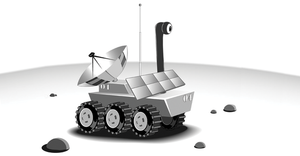Rover Vision
A Raspberry Pi Camera module and a diagnostics system allows SunRover to see and check that all systems are go.

Lead Image © Igor Vovgaliuk, 123RF.com
A Raspberry Pi Camera module and a diagnostics system allows SunRover to see and check that all systems are go.
This article is the fourth in a series of articles on building a working solar robot. SunRover is a tracked, solar-powered robot designed to move around and explore while sending back reports, tracking weather, managing a tight power budget, and providing a platform for testing new sensors and equipment as they become available. The motors, the controllers, the computers, and the sensors are all complex devices in their own right.
In Part 1 of this series [1], I went through the motor controller/power system and described the mechanisms for connecting the I2C sensors throughout the robot. In part two [2], I redesigned part of the motor power system and then looked at the solar power charging system, which happily is working perfectly! Part 3 [3] covered the robot's navigation system, and here in Part 4, I look at the Pi Camera system and the I2C diagnostics system.
In this project, I am using a standard Raspberry Pi Camera module as sold by the Raspberry Pi Foundation. This was the same camera I used in Project Curaçao [4], so I know it will handle the heat. The Raspberry Pi Camera module can be used to take high-definition video, as well as still photographs.
[...]
Price $15.99
(incl. VAT)